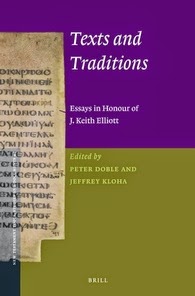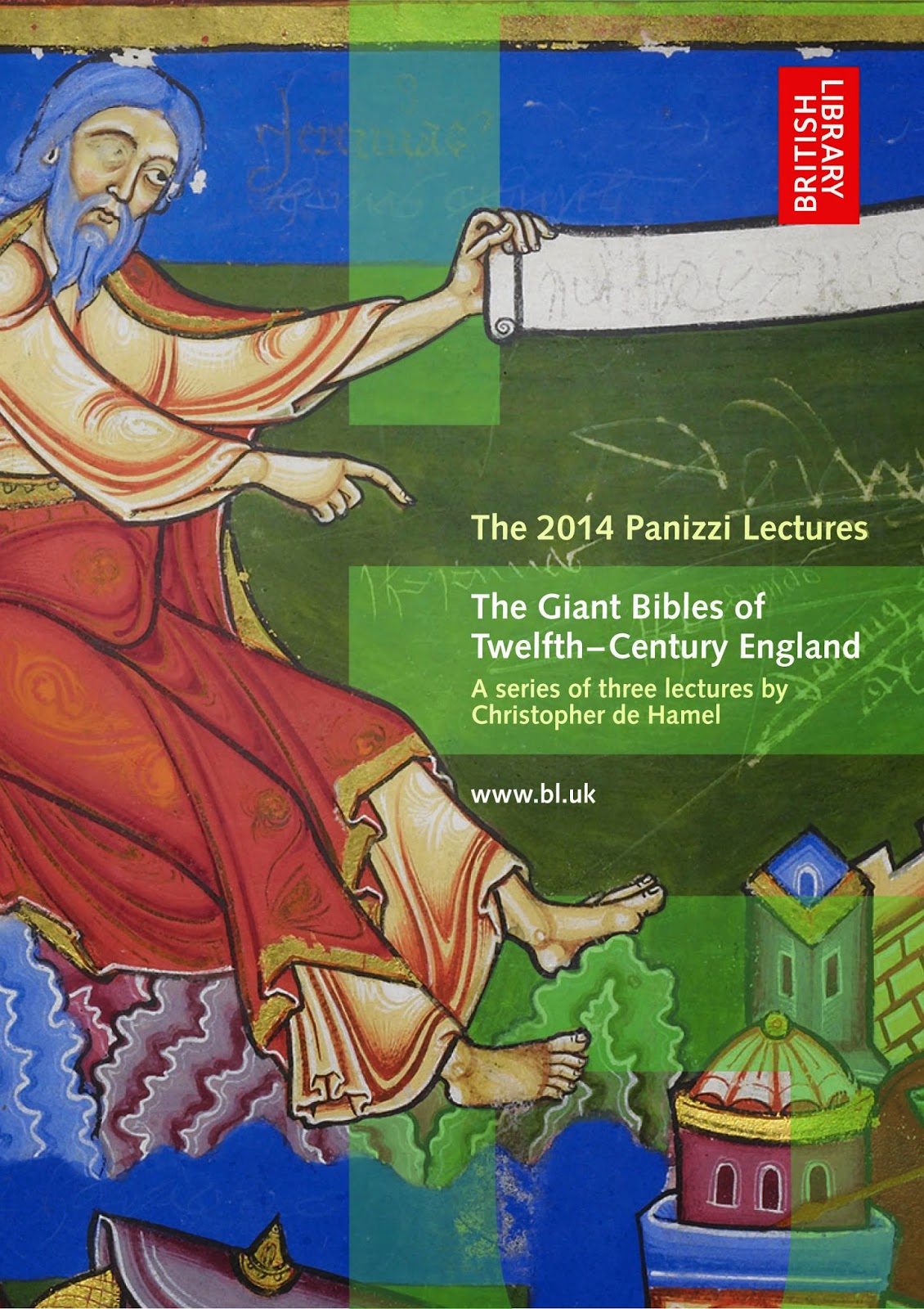There is a helpful review at BMCR of a newly published Byzantine Greek lexicon:
Eva Villani, Il lessico Ambrosiano inedito ΑΝΤΙΧΕΙΡ (C 222 inf., ff. 207r-208v). Milano: EDUCatt, 2014. Pp. 248. ISBN 9788867800865. €15.00 (pb).
The review (by Eleanor Dickey), includes translations of some entries which offer unparalleled new definitions, and this includes a couple of biblical words (here I am selecting from and quoting the review):
Φ 5: φαρὲςτὸκαθαρὸνἑβραϊκὴλέξις,ἤγουντὸἀφωρισμένοντῷθεῷ,ἐξοὗκαὶφαρισαῖοςἓνσίγμα·
‘Φαρές (means) ‘pure’ (and is) a Hebrew word, or rather (it means) something set apart for God, whence (comes) φαρισαῖος (‘Pharisee’) with one sigma.’ [The point about Hebrew is correct, for the root of ‘Pharisee’ is פרש ‘set apart’.]
...
Σ 22: σμίλαξεἶδοςδένδρουκαὶκλί(νεται)τῆςσμίλακος·
‘Σμίλαξ (is) a kind of tree, and it is declined in the genitive σμίλακος, feminine.’ [The scribe originally wrote εἶδοςβοτάνης‘a kind of plant’ and then corrected it to ‘tree’. The correction is interesting because LSJ gives four meanings for σμῖλαξ (accented thus in LSJ; Villani’s accent probably goes back to the manuscript, which has accents), of which two are trees and two other kinds of plant: holm-oak, yew tree, kidney bean, and bindweed.]
...
Τ 7: τύχηντινὲςἐπὶτῶνεὐτελῶνπραγμάτωνλέγουσιν,ἐξοὗεὐτυχῆκαὶδυστυχῆσκυτοτόμονκαλοῦσι,καὶοἰκοδόμον,τινὲςδὲἐπὶτῶνμεγάλωνἀξιωμάτωντάσσουσιταύτην·πανευτυχεστάτουςκαλοῦντεςκαίσαραςκαὶσεβαστοκράτορας,δοξάζουσιδὲπάλινἄλλωςἕτεροιτὴντύχην, τύχηνκαλοῦντεςκαὶαὐτόματονπερὶτὰἀνθρώπιναπράγματα,εἰσὶδὲοὗτοι τῶνπαλαιῶνφιλοσόφων·
‘Some people use τύχη (‘fortune’) for cheap things, whence they call a cobbler or a builder ‘fortunate’ or ‘unfortunate’, but others apply this word to great honours, calling emperors ‘most all-fortunate’. And others again think differently about ‘fortune’, calling ‘fortune’ (something that happens by) chance in human affairs, and these people are among the old philosophers.’
...
Σ 51: στέλεχοςὁφλοιός,κυρίωςδὲἡῥίζατοῦδένδρου·
‘Στέλεχος (is) the bark, but properly the root of a tree.’ [LSJ defines στέλεχος as ‘crown of the root, whence the stem or trunk springs’.]
...
Σ 39: σπεκουλάτωρὁστρατιώτηςὁβαστάζωνξίφοςκαὶἀποκεφαλίζων·
‘Σπεκουλάτωρ (is) the soldier who bears a sword and beheads.’ [LSJ gives among other meanings of σπεκουλάτωρ‘one of the principales or head-quarters’ staff of a legionary commander or provincial governor (whose duties included the carrying out of executions).’]
NB Dickey's closing comment: "In short, this work is good and useful and provides scholars with the rare opportunity to explore a previously unknown text containing a significant amount of ancient material; it would be lovely if there were more dissertations of this type."
Eva Villani, Il lessico Ambrosiano inedito ΑΝΤΙΧΕΙΡ (C 222 inf., ff. 207r-208v). Milano: EDUCatt, 2014. Pp. 248. ISBN 9788867800865. €15.00 (pb).
The review (by Eleanor Dickey), includes translations of some entries which offer unparalleled new definitions, and this includes a couple of biblical words (here I am selecting from and quoting the review):
Φ 5: φαρὲςτὸκαθαρὸνἑβραϊκὴλέξις,ἤγουντὸἀφωρισμένοντῷθεῷ,ἐξοὗκαὶφαρισαῖοςἓνσίγμα·
‘Φαρές (means) ‘pure’ (and is) a Hebrew word, or rather (it means) something set apart for God, whence (comes) φαρισαῖος (‘Pharisee’) with one sigma.’ [The point about Hebrew is correct, for the root of ‘Pharisee’ is פרש ‘set apart’.]
...
Σ 22: σμίλαξεἶδοςδένδρουκαὶκλί(νεται)τῆςσμίλακος·
‘Σμίλαξ (is) a kind of tree, and it is declined in the genitive σμίλακος, feminine.’ [The scribe originally wrote εἶδοςβοτάνης‘a kind of plant’ and then corrected it to ‘tree’. The correction is interesting because LSJ gives four meanings for σμῖλαξ (accented thus in LSJ; Villani’s accent probably goes back to the manuscript, which has accents), of which two are trees and two other kinds of plant: holm-oak, yew tree, kidney bean, and bindweed.]
...
Τ 7: τύχηντινὲςἐπὶτῶνεὐτελῶνπραγμάτωνλέγουσιν,ἐξοὗεὐτυχῆκαὶδυστυχῆσκυτοτόμονκαλοῦσι,καὶοἰκοδόμον,τινὲςδὲἐπὶτῶνμεγάλωνἀξιωμάτωντάσσουσιταύτην·πανευτυχεστάτουςκαλοῦντεςκαίσαραςκαὶσεβαστοκράτορας,δοξάζουσιδὲπάλινἄλλωςἕτεροιτὴντύχην, τύχηνκαλοῦντεςκαὶαὐτόματονπερὶτὰἀνθρώπιναπράγματα,εἰσὶδὲοὗτοι τῶνπαλαιῶνφιλοσόφων·
‘Some people use τύχη (‘fortune’) for cheap things, whence they call a cobbler or a builder ‘fortunate’ or ‘unfortunate’, but others apply this word to great honours, calling emperors ‘most all-fortunate’. And others again think differently about ‘fortune’, calling ‘fortune’ (something that happens by) chance in human affairs, and these people are among the old philosophers.’
...
Σ 51: στέλεχοςὁφλοιός,κυρίωςδὲἡῥίζατοῦδένδρου·
‘Στέλεχος (is) the bark, but properly the root of a tree.’ [LSJ defines στέλεχος as ‘crown of the root, whence the stem or trunk springs’.]
...
Σ 39: σπεκουλάτωρὁστρατιώτηςὁβαστάζωνξίφοςκαὶἀποκεφαλίζων·
‘Σπεκουλάτωρ (is) the soldier who bears a sword and beheads.’ [LSJ gives among other meanings of σπεκουλάτωρ‘one of the principales or head-quarters’ staff of a legionary commander or provincial governor (whose duties included the carrying out of executions).’]
NB Dickey's closing comment: "In short, this work is good and useful and provides scholars with the rare opportunity to explore a previously unknown text containing a significant amount of ancient material; it would be lovely if there were more dissertations of this type."















